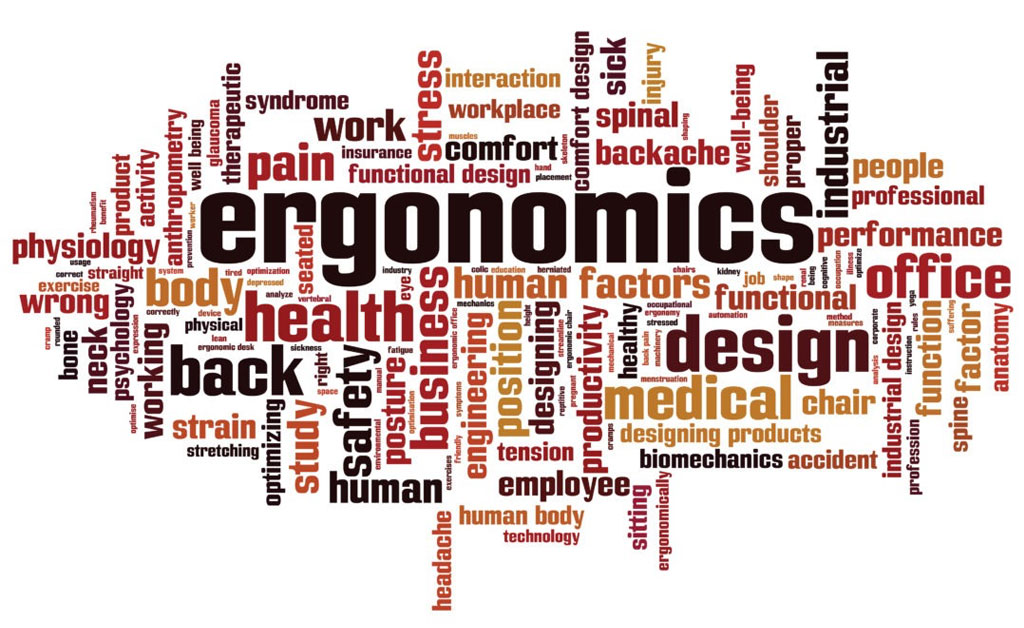“Ergonomics is the scientific discipline concerned with the understanding of interactions among humans and other elements of a system, and the profession that applies theory, principles, data and methods to design to optimize human wellbeing and overall system performance.” – Nate Barber, Evolution & Ergonomics
Biologically, the human body is the same as it was 50,000 years ago. Our hunter-gatherer ancestors shared our brain size, upright posture, and musculoskeletal, nervous, and gastrointestinal systems. It took humanity over a million years to evolve our bodies to excel at activities that, at the time, were necessary for survival. While our civilization has advanced past hunting and gathering, our biological adaptation has not caught up. Our bodies are tuned for upright running, hunting and other physical activity, yet our modern lifestyle involves mostly sitting in our cars and sitting at work, hunched over computer desks. This creates quite a mismatch between our biological and cultural requirements.

We can thank this mismatch between biological and cultural evolution for a majority of the discomfort we experience in today’s sedentary world. While some attempt to offset this difference with routine exercise, we must all keep our capabilities and limitations in mind by adopting strategies that combine both behavioral changes and technological supports.
However, it is exactly this mismatch that has led to developments in the field of ergonomics. A systematic ergonomics improvement process minimizes risk factors that lead to musculoskeletal injuries, lessens strain on muscles and ligaments, and allows for improved human performance and productivity.
Workplace design should aim to promote intuitive function and teamwork, as well as provide a safe and productive environment. Making the best use of space through optimal placement and selection of equipment and effectively aligning the workplace into the surrounding environment are important aspects of ergonomics.
As a result, we have built sit/stand desks, adjustable chairs such as the Muuv Chair, cohabiting workspaces, laptop stands, nap pods, high quality LED lighting, and much more. These products and the approach to overall wellness through ergonomics is an excellent example of using science and technology to bridge the gap between biological and cultural evolution. When implemented correctly and effectively, an ergonomics improvement solution can be a key contributor to your company’s increased competitiveness in the marketplace by reducing fatigue and providing a healthier and more productive work experience for your team.
Below is a breakdown of the issues present prior and benefits of implementing a strategic ergonomic plan:

Before:
- High Task Repetition
- Forceful Exertions
- Repetitive/Sustained Awkward Postures
- Increased workplace injuries

After:
- Reduces Costs
- Improves Productivity
- Improves Work Quality
- Improves Employee Engagement
- Creates a Better Safety Culture
- Minimizes Tension / Reduces Aches and Pains
Our hectic and demanding work schedules have resulted in a drastic evolution in today’s ergonomics. Most ergonomics equipment has been designed to be used statically; while we sit upright or while we stand. However, consider how you sit at your desk – is it motionless, or does it involve reaching for files, leaning to grab something out of a drawer or picking up a dropped pen? Essentially, you are constantly moving while seated. Typically, chairs are not designed to optimally support us while we move. This is the reason we designed Muuv, the first dynamic ergonomics seating solution to improve not just ergonomics of sitting but support your movement while you sit. Be sure to check back with us for our next blog discussing the purpose and execution of design behind the Muuv chair.

